Table of Contents
ToggleIn a world overflowing with digital content, keeping track of everything can feel like herding cats—chaotic and nearly impossible. Enter media library software, the superhero of organization that swoops in to save the day. With the right tools, managing your multimedia assets becomes as easy as pie, and who doesn’t love pie?
Imagine a place where videos, images, and audio files coexist in perfect harmony, all neatly categorized and ready for action. Whether you’re a creative professional or just someone with a penchant for collecting cat memes, media library software can transform your digital chaos into a well-oiled machine. Say goodbye to endless scrolling and frantic searches. It’s time to reclaim your sanity and let technology do the heavy lifting.
Overview Of Media Library Software
Media library software simplifies the management of digital assets in a structured way. Users can organize videos, images, and audio files, making them readily accessible. Efficient categorization enables quick retrieval, which enhances productivity.
Features often include tagging, metadata support, and advanced search capabilities. Tagging systems allow users to label files with relevant keywords. Metadata support helps in understanding file details, enhancing search accuracy. Advanced search capabilities enable precise file location through filters and queries.
Additionally, collaboration tools facilitate teamwork among users. Multiple users can access and edit assets simultaneously, streamlining workflows. Version control features maintain file integrity, preventing data loss during collaborative efforts.
Cloud integration further enhances accessibility. Media library software often syncs with cloud storage services, allowing remote access to files from any device. Security protocols protect sensitive materials from unauthorized access.
Valuable reporting and analytics features monitor file usage. Users can track which assets are used most frequently, informing future content creation decisions. Cost-effectiveness stands out as another advantage, reducing the need for physical storage solutions.
Overall, media library software stands as a vital tool for individuals and organizations. By improving digital content organization and accessibility, it addresses the challenges faced in today’s media-rich environment. Enhanced management capabilities allow users to focus more on creativity and less on administrative tasks.
Key Features To Consider

Media library software includes several essential features that enhance organization and productivity. Evaluating these features helps users select the best software for their needs.
User Interface
An intuitive user interface streamlines navigation and reduces the learning curve. Users appreciate clean layouts and easy access to tools. Customizable dashboards enhance the experience, allowing users to prioritize important functions. Visual elements like thumbnails make file identification simpler. Users often favor drag-and-drop functionality for quick file uploads or reorganization.
File Management
Effective file management capabilities are crucial for any media library software. Options for tagging and categorization improve file retrieval, allowing users to locate assets quickly. Metadata support enhances searchability, ensuring even less prominent files can be found efficiently. Having version control aids in maintaining file integrity through changes. Bulk actions like renaming, transferring, or deleting multiple files at once save users valuable time.
Compatibility And Integration
Seamless compatibility and integration with existing tools enhance the software’s value. Users benefit from options to connect with popular cloud storage services, facilitating remote access. Integration with productivity applications supports enhanced workflows. Open API support allows for customization and connection with specific user environments. Ensuring software meets industry standards promotes smoother collaboration across teams.
Popular Media Library Software Options
Several media library software options excel in organizing and managing digital content effectively. Each program offers unique features to suit various user needs.
Software A
Adobe Bridge provides robust asset management for users needing advanced organizational tools. It supports numerous file formats, making it versatile for multimedia projects. Users can easily tag and categorize files, improving searchability. Integration with other Adobe Creative Cloud applications enhances workflow efficiency. Collaboration capabilities allow team members to access and edit files, ensuring everyone stays updated. Adobe Bridge streamlines the digital asset management process, ultimately increasing productivity.
Software B
Canto offers excellent media library management tailored for teams. Cloud-based accessibility means users can retrieve files from anywhere at any time. Its user-friendly interface makes navigation straightforward even for less tech-savvy individuals. Advanced tagging and metadata features support detailed organization, allowing for quick asset retrieval. Reporting and analytics functionalities help track content usage trends, informing future strategies. Canto emphasizes collaboration, making it an ideal choice for creative teams.
Software C
Bynder specializes in brand asset management, ideal for maintaining consistent branding across digital assets. It allows users to centralize all media files, ensuring easy access and organization. Features like version control help maintain file integrity throughout the editing process. The software supports robust security measures, protecting sensitive brand materials. It also offers customizable workflows that adapt to various team requirements. Bynder stands out for its emphasis on brand consistency and collaboration.
Pros And Cons Of Media Library Software
Media library software offers several benefits and drawbacks, making it essential to weigh both before implementation.
Advantages
Enhanced organization makes discovering digital files straightforward. Users can tag items, assign metadata, and categorize assets, facilitating efficient retrieval. Collaboration among team members benefits from shared access, allowing multiple users to edit simultaneously. Security features safeguard sensitive materials, ensuring only authorized personnel can access files. Cloud integration provides flexibility, enabling access from various devices and locations. Tracking usage through analytics helps users understand file popularity, guiding future content development.
Disadvantages
Cost can be a significant factor since some media library software solutions entail subscription fees or high initial expenses. The learning curve associated with new software may slow down operations initially. Compatibility issues can arise when integrating with existing systems, potentially disrupting workflows. Limited offline access prevents retrieval of files without an internet connection, hindering productivity in certain situations. Additionally, not all software offers customization options, restricting unique organizational needs.
Media library software emerges as an essential tool for anyone looking to manage digital content efficiently. Its ability to organize multimedia assets and facilitate collaboration can significantly enhance productivity. By leveraging features like tagging and advanced search capabilities users can quickly access the files they need without unnecessary delays.
While there are some challenges to consider such as costs and compatibility issues the benefits often outweigh the drawbacks. Investing in the right media library software can streamline workflows and free up time for more creative pursuits. For individuals and organizations alike embracing this technology can lead to a more organized and effective approach to digital content management.







